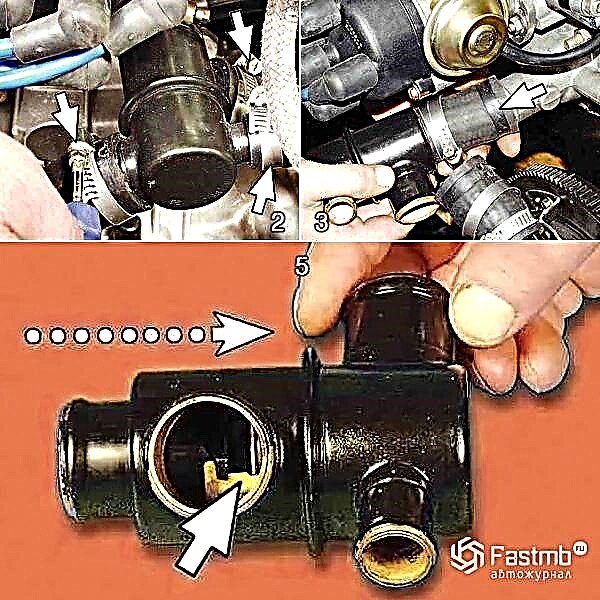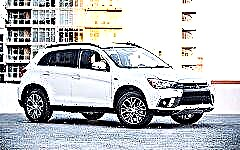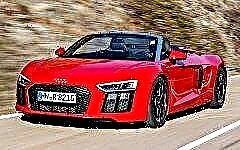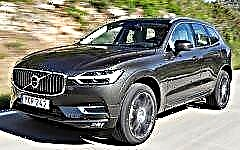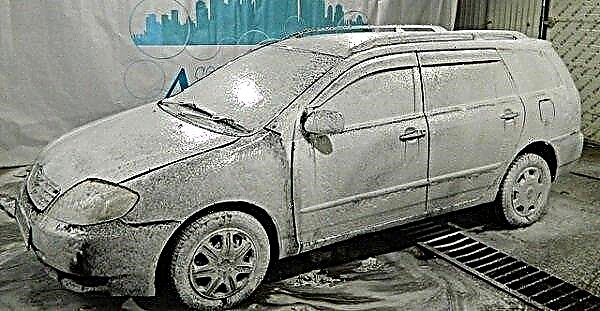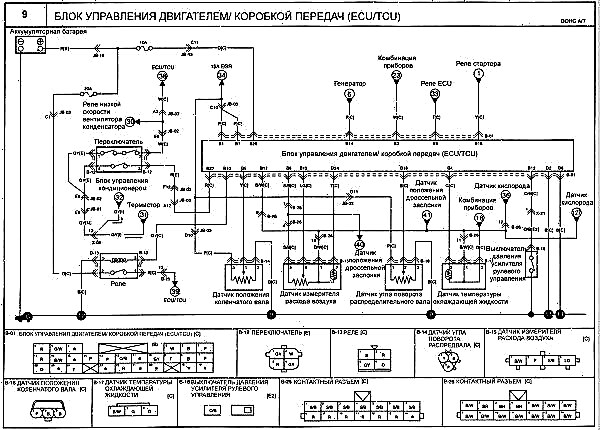

The content of the article:
- Dimensions and weight
- Dynamic characteristics
- Braking system and suspension
- Optics
- Prices and configuration
Before the appearance of official information about the restyled version of the Honda Pilot, there were various rumors. Some said that they would present a completely new generation, others, on the contrary, that they would show a slightly updated crossover. Officially, the new crossover Honda Pilot with well-visible updates was presented on June 16, 2018. The first start of sales was in the United States, at the beginning of 2019, a month later, the car appeared in China.
In Russia, the novelty went on sale not so long ago. Under the hood of the new Honda Pilot, there is only one V6 PI VTEC + VCM gasoline engine with a volume of 3.0 liters (in North America, a 3.5-liter unit is installed). A 6-speed automatic transmission works in tandem with the engine, with electronic control and a torque converter. The 2019 Honda Pilot is a smart drive based on iVTM-4 thrust vector control.
Crossover dimensions and weight

As a consequence of the exterior changes, the dimensions of the new Honda Pilot crossover have grown. The car added 37mm in length, but remained largely unchanged in width. The engineers did not change the wheelbase, respectively, in this regard, the crossover before and after restyling is no different.
| Dimensions and weight of the updated Honda Pilot 2019-2020 | |
| Length, mm | 4954 |
| Width, mm | 1997 (excluding mirrors) |
| Height, mm | 1788 |
| Wheelbase, mm | 2820 |
| Clearance, mm | 200 |
| Front wheel track, mm | 1684 |
| Rear wheel track, mm | 1706 |
| Turning radius, m | 5,71 |
| Trunk volume, l | 305 (with folded 2nd row 1779 l) |
| Number of seats | 8 |
| Curb weight, kg | 2008-2056 |
| Full weight, kg | 2650 |

For comparison, let's point out the dimensions of the pre-styling version of the Honda Pilot crossover in order to understand exactly where the changes took place.
| Dimensions and weight of pre-styling Honda Pilot 2018 | |
| Length, mm | 4954 |
| Width, mm | 1997 (excluding side mirrors) |
| Height, mm | 1788 |
| Wheelbase, mm | 2820 |
| Clearance, mm | 200 |
| Front wheel track, mm | 1684 |
| Rear wheel track, mm | 1706 |
| Trunk volume, l | 305 |
| Number of seats | 7 or 8 |
| Curb weight, kg | 1987 |
| Full weight, kg | 2650 |
As you can see, the differences are minimal, if we talk about the number of seats, they are the same. Similarly, the full weight of the Honda Pilot crossover remained the same. In the equipped form, the novelty nevertheless became heavier, as modern technologies and security systems were added.
Technical and dynamic characteristics Honda Pilot 2019-2020

As already mentioned, the new Honda Pilot 2019 crossover arrived in Russia with only one V6 gasoline engine with a volume of 3.0 liters. A 6-speed automatic transmission works in tandem. As for the drive, it is automatically connected.
| Specifications of the updated Honda Pilot 2019-2020 | |
| Engine | V6 PI VTEC + VCM |
| Fuel | Petrol |
| Volume, l | 3,0 |
| Power, h.p. | 249 |
| Torque, Nm | 294 |
| Transmission | 6 tbsp. Automatic transmission with torque converter |
| Drive unit | full, iVTM-4 |
| Dynamic characteristics Honda Pilot 2019-2020 | |
| Maximum speed, km / h | 192 |
| Acceleration from 0 to 100 km / h, s | 9,1 |
| 2019 Honda Pilot Fuel Consumption | |
| Urban cycle, l | 14,3 |
| Country cycle, l | 8,2 |
| Mixed cycle, l | 10,4 |
| Wheel disks | 18 ″ (tires 245/60) |
Compared to North America, where the Honda Pilot was first introduced, the Russian trim has lost power. In the United States, the crossover received a 3.5-liter V6 gasoline engine. For this engine, a 9-speed transmission works in tandem.
| Specifications Honda Pilot 2019 for USA | |
| Engine | V6 i-VTEC |
| Fuel | petrol |
| Volume, l | 3,5 |
| Power, h.p. | 283 |
| Torque, Nm | 355 |
| Transmission | 6 tbsp. or more often 9 tbsp. Automatic transmission |
| Drive unit | full |
| Dynamic characteristics Honda Pilot 2019-2020 for USA | |
| Maximum speed, km / h | 205 |
| Acceleration from 0 to 100 km / h, s | 8,1 |
| 2019 Honda Pilot USA fuel consumption | |
| Urban cycle, l | 12,4 |
| Country cycle, l | 9,0 |
| Mixed cycle, l | 10,7 |
It can be seen that for Russia the engine was simply derated, while installing a weaker transmission. This approach reduced taxes on imported cars, on the other hand, the fuel consumption of the updated Honda Piot increased by several liters.
Braking system and suspension

If the appearance of the updated Honda Pilot has changed in individual parts, then the suspension remains old and completely independent. MacPherson struts are installed in front, and multi-link in the back. This allowed to keep the crossover's low price, softness and comfort. As for the Honda Pilot braking system, the front is ventilated disc brakes, with discs 330 mm in diameter, the rear discs are simple, not ventilated, with a similar 330 mm diameter.
Optics of the new crossover

It's no secret that the optics of the new crossover have changed most noticeably. The basic equipment received halogen headlights and LED running lights. The top-end configurations of the new Honda Pilot received LED headlights, with lenses and the possibility of cornering lights. The most expensive optics is considered to be Full-LED or matrix, where LED elements are installed in a row.
The system automatically recognizes oncoming traffic, can extinguish a certain sector, thereby not blinding oncoming traffic. The rear feet of the new crossover also got a new L-shaped design. For a separate surcharge, the buyer is offered to install dynamic direction indicators.
Prices and configurations Honda Pilot 2019-2020

Three configurations of the Honda Pilot crossover were officially brought to the Russian market. Among themselves, cars differ in a functional set, safety and comfort systems.
| Prices and configurations Honda Pilot 2019-2020 | |
| Complete set | Price from, rub. |
| Lifestyle | 3214900 |
| Executive | 3564900 |
| Premium | 3814900 |
In all likelihood, in the near future, changes in the technical characteristics of the Honda Pilot for Russia should not be expected. In addition to the standard set, the manufacturer offers many additional options, such as a branded additional roof rack, various chrome inserts and other decorative trifles. See also the review of the new 2019 Honda Pilot.
Honda

